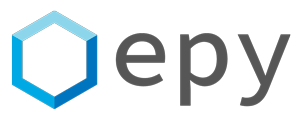By Anna Caldiroli
On February 15, the harmonized classification list (and therefore mandatory classifications) in Great Britain (GB) was updated to its sixth edition. The updated file is available at this link: HSE MCL List.
Regulatory Framework in Great Britain
When it comes to classification, labeling, and packaging of substances and mixtures, following Brexit, Great Britain (which includes England, Scotland, and Wales) adopted the GB CLP regulation. More information on this regulation and its updates can be found here: GB CLP Information.
The Health and Safety Executive (HSE) is the regulatory authority responsible for chemical classification in Great Britain, taking over several functions previously managed by the European Chemicals Agency (ECHA).
Despite its name, GB CLP differs from EU CLP in several key aspects:
- The EU Regulation (EU) 2023/707 has not been implemented in Great Britain, meaning the new hazard classes introduced by the EU CLP have not been adopted.
- Great Britain operates a completely independent classification system, meaning that substances classified and harmonized under Annex VI of the EU CLP are not automatically included in the GB MCL List (Great Britain Mandatory Classification and Labelling List) after Brexit.
This creates a misalignment between EU and GB CLP regulations, which affects compliance and market access. However, one key difference to note is that while GB CLP does not evaluate endocrine-disrupting properties for substances and mixtures, GB SDSs still require the inclusion of such information in Section 2.3 when relevant.
The Latest Update to the GB MCL List
The GB MCL List:
- Contains a list of substances with their mandatory classification and labeling requirements.
- Is updated annually to reflect the latest scientific and technical developments.
- Includes legally binding classifications for substances in Great Britain.
On February 15, the HSE updated the GB MCL List, incorporating 46 new or modified classifications compared to the previous edition. This update also includes revisions to existing substances and corrections of previously reported errors (such as typos and inconsistencies).
Some newly added and commonly used substances include:
- Acetone oxime
- Tetramethylene dimethacrylate
- 9-[2-(ethoxycarbonyl)phenyl]–3,6-bis(ethylamino)–2,7-dimethylxanthylium chloride (also known as Basic Red 1)
- 4-Methylimidazole
Additionally, the classification and labeling of 1,2-Benzisothiazolin-3-one has been modified.
Meanwhile, formaldehyde…% and formic acid…% remain aligned with EU CLP classifications.
How can we support our clients?
Our dedicated SDS module ensures full compliance with GB CLP.
- All relevant regulatory lists have been implemented, allowing the software to autonomously identify applicable restrictions for substances or mixtures.
- The harmonized classifications and labels for all substances listed in the GB MCL List are readily available and can be directly applied.
- Users can access both the 5th and 6th editions of the MCL List, making it easy to compare previous and updated classifications.
This ensures that companies can efficiently manage regulatory requirements, maintain compliant SDSs and labels, and adapt seamlessly to future updates. Also, have you registered for our next webinar on UK chemical regulations?



